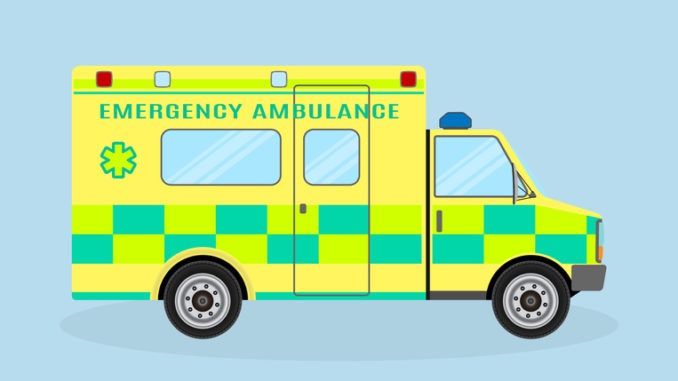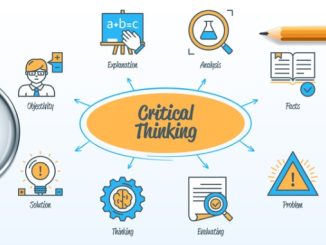
Digital Health’s GP columnist, Neil Paul, has been thinking about the huge changes that GP practices have witnessed during COVID-19 – and he has some ideas…
CREDIT: This is an edited version of an article that originally appeared on Digital Health
I’ve had two ideas on my mind recently, perhaps provoked by the huge changes we have seen in relation to COVID-19. I think have both have merit.
Perhaps the biggest change in general practice from coronavirus is the move to telephone and video consulting. While there have always been evangelists, lots of us GPs have previously resisted, stuck in a model where a patient has to come to the surgery, sit in a potentially infectious waiting room, and then doff their cap as they enter our room. We make a stab at equality by turning our desks sideways, and have built a whole science about it – asking about their ideas, concerns and expectations – listening out for hidden cues and talking about closing or door-stepping.
While those classic consultations still exist, the harsh reality shown by COVID-19 is that some people just want to speak to you about their earache or their kids’ spots while driving and just want a quick opinion and prescription; some are after transactional medicine.
GPs as an emergency service?
Another change is that we aren’t seeing half as many really acutely unwell people in the surgery. At the end of last year it wasn’t unusual for 10-15 ambulances a day to visit my surgery to take patients away to the A&E department and for my fellow GPs to be managing all sorts of emergencies in their unprepared, under-equipped rooms.
For example, the wife of one of our partners popped in to see him on her lunch break – she is a local anaesthetist. She got involved in a paediatric arrest in one of our rooms and we all felt guilty when she called for an intra osseous needle – and we didn’t have one.
We have subsequently decided we should not have one; we aren’t an emergency service. Yet some have previously treated us like one. Despite A&E being relatively close, some claimed they wanted to see their GPs with their acute chest pain. In part our, relatively open, appointment system allowed people to book in with all sorts of stuff that wasn’t really appropriate for general practice.
However, now we pretty much ‘phone triage everything using an allied healthcare practitioner or a GP. Our ambulance attendance rate at the surgery has dropped. More unwell people go to A&E which is, perhaps, where they belong.
The GP will see you in A&E now?
This led a colleague to say something like, “In the past we used to complain that we saw A&E patients, and A&E always complain they see GP patients; wouldn’t it be good if we swapped that around?” Well, GPs in A&E perhaps don’t work; there is evidence that they tend to ‘go native’ and just become a highly paid junior doctors – and then you lose them from general practice
So how about video suites in A&E? On site staff do some observations, simple triage, and then video consult with a GP, preferably their own or from their practice, but could be a PCN or wider service. To some extent, for some things, a virtual, remote GP with access to the records and EPS is, perhaps, all you need. The capacity of a virtual system could be huge – the end of 4-hour waits.
An image problem
Idea two is different. There is no doubt AccuRx has been a disruptive innovation for good. The ability to send a text message, with or without attachment, to a single patient from my desktop is something I have been asking for for ages.
Their latest feature – being able to receive back images into the notes – has been really useful. We send a link to patients who have a mole or lesion, or rash; they photograph them and send them back. It goes into an inbox and the patient record and, if the receptionists send it before the consultation, you can look at it beforehand. Plus it’s all recorded in the notes for legibility.
However, the quality of images leaves something to be desired sometimes, and need some image tech geeks to play with the camera, so more are in focus and, perhaps, they don’t have the correct colour balanced, nor are they the right size. I know other companies are creating apps that take 3-D views, and auto-measure things, which would be a great help.
The ideal scenario for AI
What we know is that, suddenly, we now have hundreds – if not thousands – of images of lesions and rashes and these are exactly the scenarios for AI. The problem, however, is who pays for the software? Why would I, as a GP, pay for the AI from my pocket? We can’t charge the patient. I’m not sure it works at a single practice level, but it strikes me that we could, in theory, get to the point where we could take all this work off general practice.
Perhaps at PCN, or bigger scale, we could have one person – a consultant or GPSI – working with an AI that processes all the images from an area, same day, and avoids any of them needing a GP appointment?
Risk of deskilling
This could take a huge workload away from normal appointments. Also, given that the quality of diagnosis can vary from GP to GP, it could lead to faster diagnosis for some patients.
But does it deskill the average GP? Well, it might, but we’ve been deskilled before. The counter argument is that it builds a huge bank of images and, potentially, outcomes that could be used for learning purposes to teach people much faster than now.
So, two huge changes. Take a lot of simple dermatology off primary care and free it up to see the patients going to A&E. A&E, in return, manages the acutely unwell where, perhaps, they should be seen.


Be the first to comment